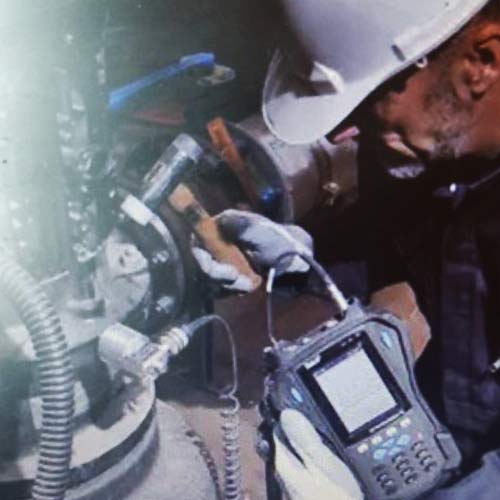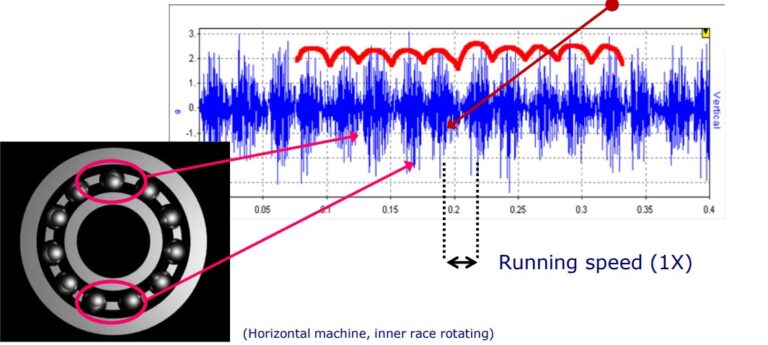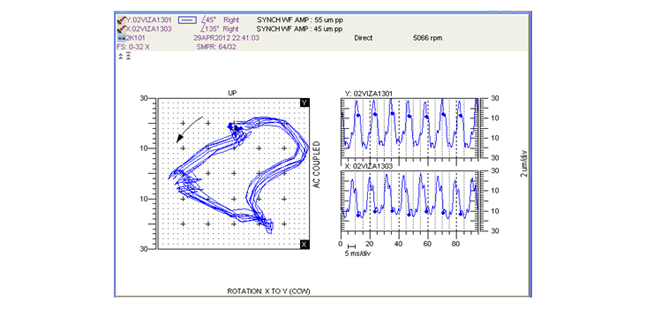Vibration Analysis

Asset condition monitoring
Vibration and WIRELESS-BASED Remote Monitoring
The main target of Asset Condition Monitoring and wireless sensor systems is to ensure the health and continuous operation of the plant machinery. We conduct offline and online vibration data collection & analysis as per customer requirements.
Vibration analysis is simply using a machine’s vibration data to identify faults. The analysis goes deeper than detection and involves determining the nature of the problem. When vibration sensors detect a significant change, vibration analysis is used to find out what caused the change.
Using the Software, analysts can trend vibration data over time, providing insights and leading to improved decision-making, on further diagnosis based on the data. Historical trends can help maintenance teams focus on how they spend their time and energy — and make impending faults easier to detect. ISO 10816 has developed standards for vibration evaluation of machinery including different types of machinery like pumps, common equipment, wind turbines, hydro turbines, gas turbines & steam turbines, reciprocating machinery, etc. ISO 10816 references will be used for diagnosis since this provides a reference like allowable vibrations and alarm or trip conditions for various machinery based on some statistical analysis of historical data.
A successful machinery problem analysis needs a combination of knowledge, skill, and experience on functions like:
- The vibration signatures
- Raw or time waveform analysis
- High-frequency detection analysis and usage of trend
- Crest factor
- Waterfall plots
- Spectrum
- Sidebands
- Harmonics
- Run up coast down
- Bump test
- Bode plot etc.;
Problems detected using Vibration diagnosis:
- Unbalance
- Bent shaft
- Eccentricity
- Run Out
- Misalignment
- Soft foot
- Coupling problem
- Looseness
- Belt drive problems
- Gear defects
- Bearing defects
- Electrical faults
- Oil whip/whirl
- Cavitation
- Shaft cracks
- Rotor rubs
- Resonance
- Hydraulic and aerodynamic forces
- Structural problems
- Foundation issue
- Root cause analysis
Bearing damage
A roller bearing can be damaged in several ways, each with its vibration fingerprint:
− Damage to the inner ring (sample shown below)
− Damage to the outer ring
− Damage to the cage
− Damage to rolling elements (e.g. cylinders, cones, and needles)

using IIOT Sensors and Machine Learning
IIOT compatibility by Indian companies to enhance operations by connecting through the internet of things helps to scale the operations and access global technology to improve productivity. Using wireless technology, vibration sensors can connect to software that helps service teams make sense of the data collected and determine the most effective corrective actions. Vibration wireless sensors and Software analytics can track and trend vibration data over time, providing diagnosis based on the current condition and helping the maintenance team for improved decision-making.

Journal Bearing Monitoring and Diagnosis
Diagnosis of Turbomachinery using special techniques and displacement probes

Orbit or Time base plot
The orbit combines the time base waveform data from two, perpendicular 90° apart, coplanar transducers to create a single plot showing the two-dimensional dynamic motion of the shaft centerline. The orbit can be unfiltered but is predominantly 1X. The data comes from XY transducers, which observe the motion of the rotor.
Shaft centerline analysis
The shaft rest position, at the lowest possible position in the bearing, is marked as the reference. Based on the running speed, the change at the moment is monitored.
Shaft centerline check during run-up test
The shaft shifting position study, after the equipment is started up, gives an idea on the position of shifting and lifting the orbit information and if any rubbing happens.
Eccentricity ratio
The shaft eccentricity ratio study gives an idea on how much the shaft is near to the centerline, and away from the extreme limits of the bearing.
Problems diagnosed with analysis techniques for turbomachinery
Turbo-Machinery Problems diagnosed with online data analysis include:
- Unbalance in the rotor
- Misalignment
- Rubs
- Oil whirl
- Oil whip
- Natural (critical speed) frequency
- Structural resonance
- Looseness
- Rotor Cracks

